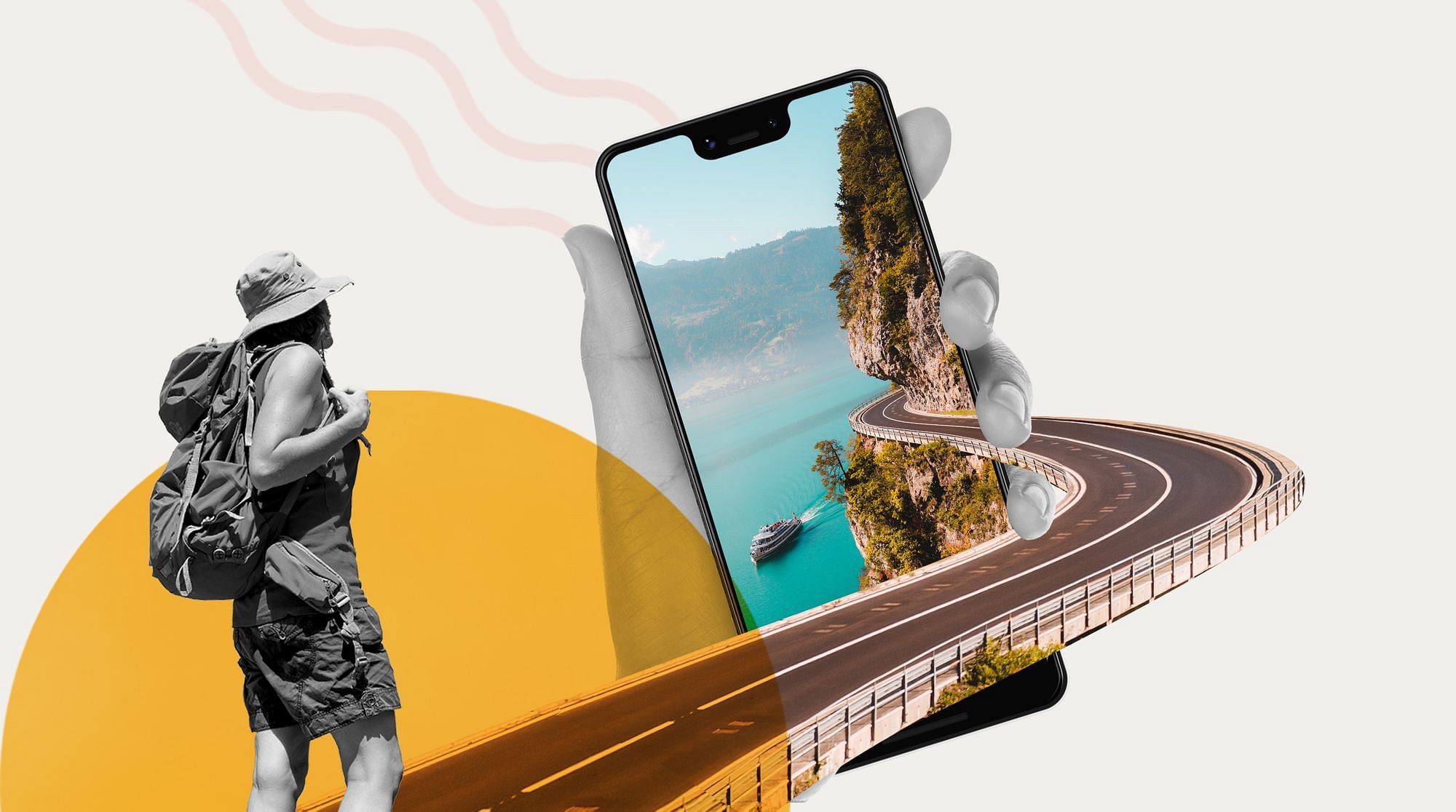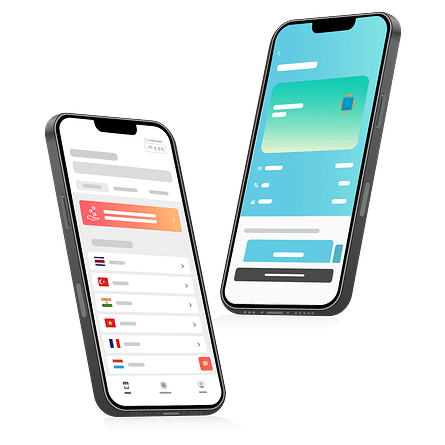
When it comes to using your phone on your home network, mobile data is pretty straightforward. You set up a plan with your provider that determines a monthly amount of talk, text, and data.
So, why do additional charges get out of hand when you travel abroad? The answer: Data roaming. Here's a closer look at what data roaming means, how roaming charges add up, and how you can use an eSIM to avoid them.
What Is Data Roaming?
Data roaming is when you use a foreign provider's wireless or cellular network to access your smartphone services. When you roam, you operate as a guest of that new network and are typically charged a premium for call, text, and data services.
How Much Does Data Roaming Cost?
There are no regulations restricting the cost of international roaming. Your home provider has to accept the foreign carrier's rate, no matter how high. Those charges get passed on to you as a data roaming fee and can add up quickly.
Some home providers will offer a daily roaming plan that follows a pay-as-you-go model. However, you have little control over what the plan includes, and you'll still pay a premium due to data roaming markups. You could pay up to 10X your local rates to use a foreign carrier's network. And you might not find out until you return home from your travels.
The $13,000 Data Roaming Charge
You read that right. While a San Francisco family was traveling overseas, their son inadvertently racked up a $13,000 roaming charge. Although they had set the son's smartphone to airplane mode, the app he was playing ran ads and continued to communicate data.
The charges were so high because the family had chosen a T Mobile plan with service in 210 countries, but the Philippines was not one of them. So, their son's phone connected to data outside the plan they'd set up for their trip.
After reviewing the case, T Mobile dropped the additional data roaming charges. However, you may not be so lucky with another wireless carrier. It's a great example of how quickly roaming charges can add up if you aren't careful.
The Networks Your Phone Can Connect To
Think of your phone as a vehicle and your SIM (or eSIM) as a license plate. Your SIM identifies you as a mobile customer and determines what networks you can join throughout your journey.
It all starts with your ICCID (Integrated Circuit Card Identifier). It's a unique 18- to 22-character code that identifies your SIM card and includes the following information:
- Country of origin
- Home network
- Account identification number
As you travel, the local or international network you can connect to depends on the data plan you have with your provider, communicated by your ICCID.
Locked vs. Unlocked Phones
There are two types of phone contracts you can set up with your provider, locked and unlocked.
What Is a Locked Phone Contract?
A locked phone contract is when a provider supplements the cost of a new phone in exchange for "locking" you into a contract. You pay $0 upfront for the phone and, in return, agree to pay a given rate for their services over a set period (two years is standard).
In the short term, this can sound like a pretty good deal. You get a brand-new phone as long as you stick with the same carrier for the length of the contract. However, at the end of two years, you'll have paid a monthly premium exceeding the initial cost of the phone. These arrangements initially seem attractive but are rarely worth it in the long term.
What Is an Unlocked Phone Contract?
An unlocked phone contract is when you own a mobile device outright. You pay 100% of the cost of the phone and have the freedom to choose the carrier and data plan that suits you.
Though you're paying the total cost of a new phone, this type of agreement gives you much more freedom than a locked contract. You can change carriers at your discretion and use local SIMs or eSIMs when you travel. The initial cost is well worth it for an avid traveler.
How Does an eSIM Work?
An eSIM is an "embedded SIM card." Unlike a physical SIM, it's built into your device and functions 100% digitally. If your phone is carrier-unlocked, you can download an Airalo eSIM, install it onto your device, and connect to a new network in minutes.
eSIMs make it even easier to switch carriers and connect to local networks. They eliminate the need to find a SIM vendor in a new country, spend time switching physical SIM cards, or manage multiple SIMs while you travel. There are no surprising roaming charges, and they're an easier, faster, more affordable way to stay connected.
When Roaming Charges Occur and How To Avoid Them
Now that you know the ins and outs of networks, SIM cards, locked vs. unlocked contracts, and eSIMs, let's explore how you can avoid data roaming charges.
As demonstrated by the story of the $13,000 in roaming charges, data roaming is risky even when you have an international plan from your home provider. The more information you collect about your usage plan and the networks you can connect to, the less likely you'll use your roaming plan with an unauthorized network.
That said, you should also be cautious of the apps you use and when your phone connects to new networks. Here are a few more things to consider so you don't incur surprise charges.
Turn Off Data and Use Airplane Mode
Traveling between providers is one of the riskiest times to use data. Be sure to turn off your cellular data and engage airplane mode when you're in flight or traveling to another region.
Go to your phone's settings and make sure your device doesn't "receive data" or "send data," You can monitor your data usage in your settings to see if any apps are still connected and communicating data.
Stay Within Your Range
Remember to use your data plan as intended. Avoid exceeding the length of the plan and going over your data roaming limit. You can always log into your account with your cellular provider and see the terms of your agreement.
Use an Airalo eSIM
Another way to avoid data roaming charges is to switch to an Airalo eSIM. An eSIM allows you to connect like a local: You pay a local rate to connect to a local network and don't need to worry about surprise roaming fees.
With an Airalo eSIM, you get to choose the plan that works best for you. If you buy 1GB of data, you're charged only for that 1GB. And if you run low on data, you can easily top up within the Airalo app. Our plans are super straightforward and give you the freedom and flexibility to connect affordably, no matter where you travel.
Ready to say goodbye to data roaming and give an eSIM a try? Browse eSIMs for 200+ countries and regions in the Airalo store. (You have our word you won't come home to a $13,000 roaming bill!)


